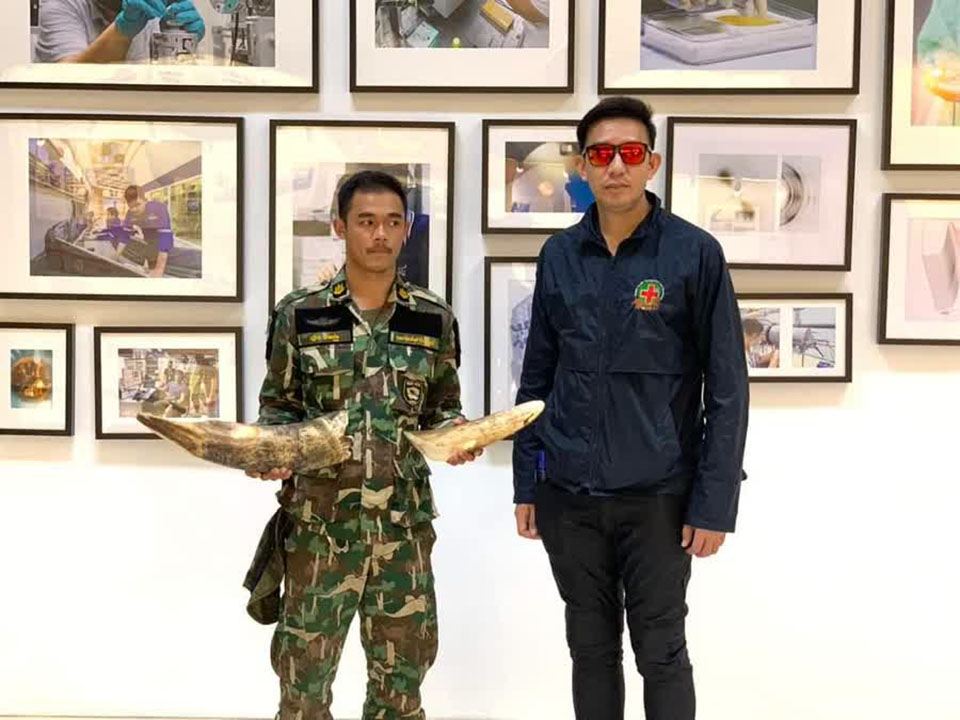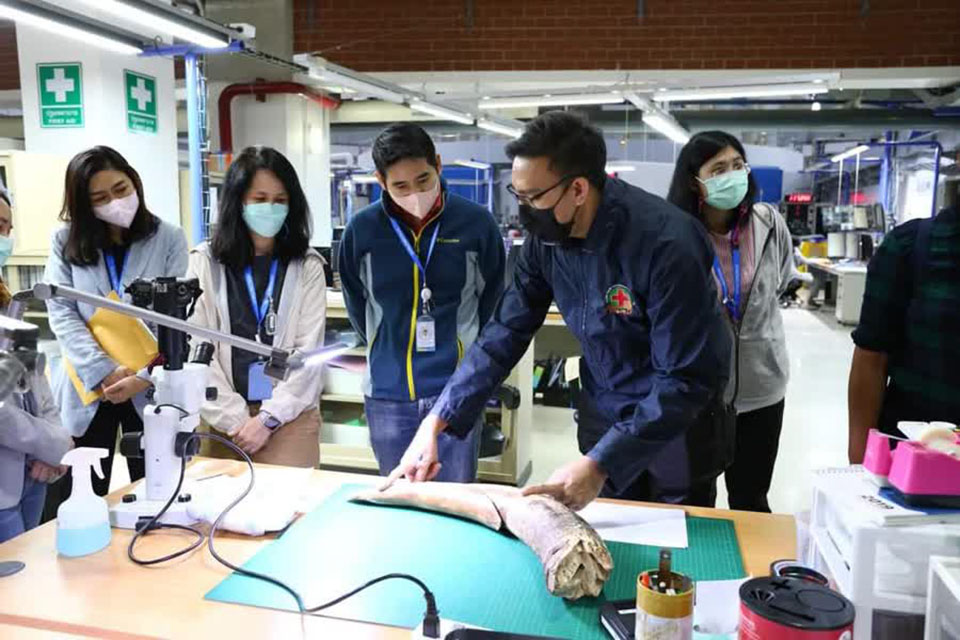
An analysis is being performed on a broken tusk of a wild elephant in Khao Yai National Park to test for evidence of malnutrition.
Phattarapol Manee-on, head of the wildlife health management division of the Department of National Parks, Wildlife and Plant Conservation, delivered samples of the broken tusk to the Synchrotron Light Research Institute for lab analysis. The samples were recovered after two wild elephants fought over a salt lick in Khao Yai national park.
The broken tusk was from Plai Thong Kham, a wild bull elephant, who fought with rival male Plai Nga Thong at an artificial salt lick in Khao Yai national park in Nakhon Ratchasima last month.
Supakorn Rakmai, assistant director of the research institute, said the goal of using synchrotron light for analysis was to identify the elemental radio and chemical functional group proportions of organic compounds in the ivory, which would reveal changes in its biochemical contents. The porosity of the ivory would be determined via 3D X-ray imaging, which would be used to determine whether malnutrition had resulted in the tusk being easily fractured. This information will be useful in planning for the health care of wild elephants in the future.
Phattarapol said samples from seven artificial salt licks in the national park were also submitted for comparative analysis of their mineral content. He noted that wild elephant tusks were easily fractured, as Plai Thong Kham’s left tusk had broken off at the base, near the root. There were also indications that the elephant’s gums were receding. Additionally, wild elephants frequently leave the wilderness in search of garbage or salty foods such as fermented fish and instant noodles, raising concerns that they may be low on certain nutrients.
Phattarapol believes testing these salt licks could reveal whether or not the minerals in the salt blocks are suitable for wildlife consumption. (NNT)

 |
 |
 |





